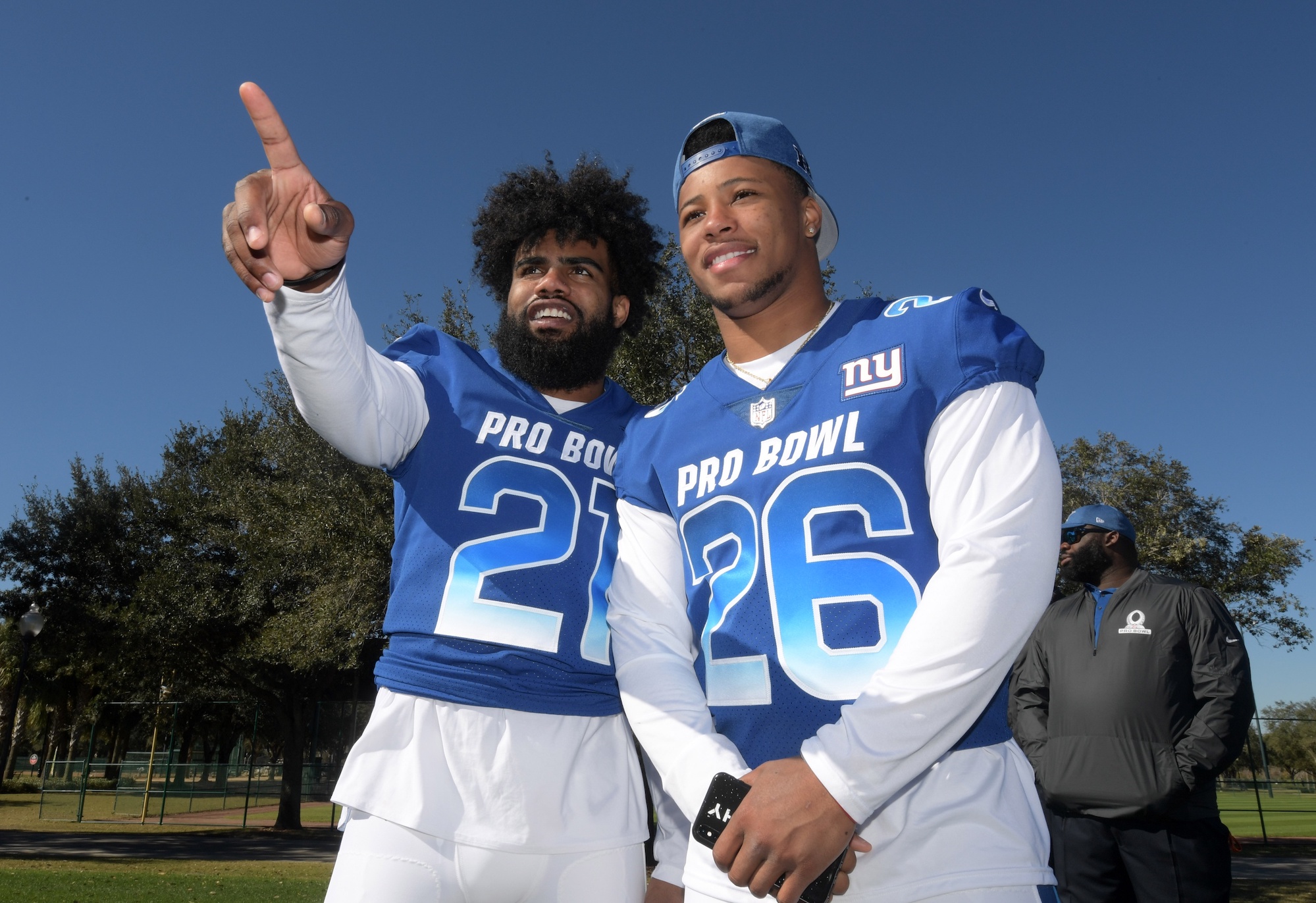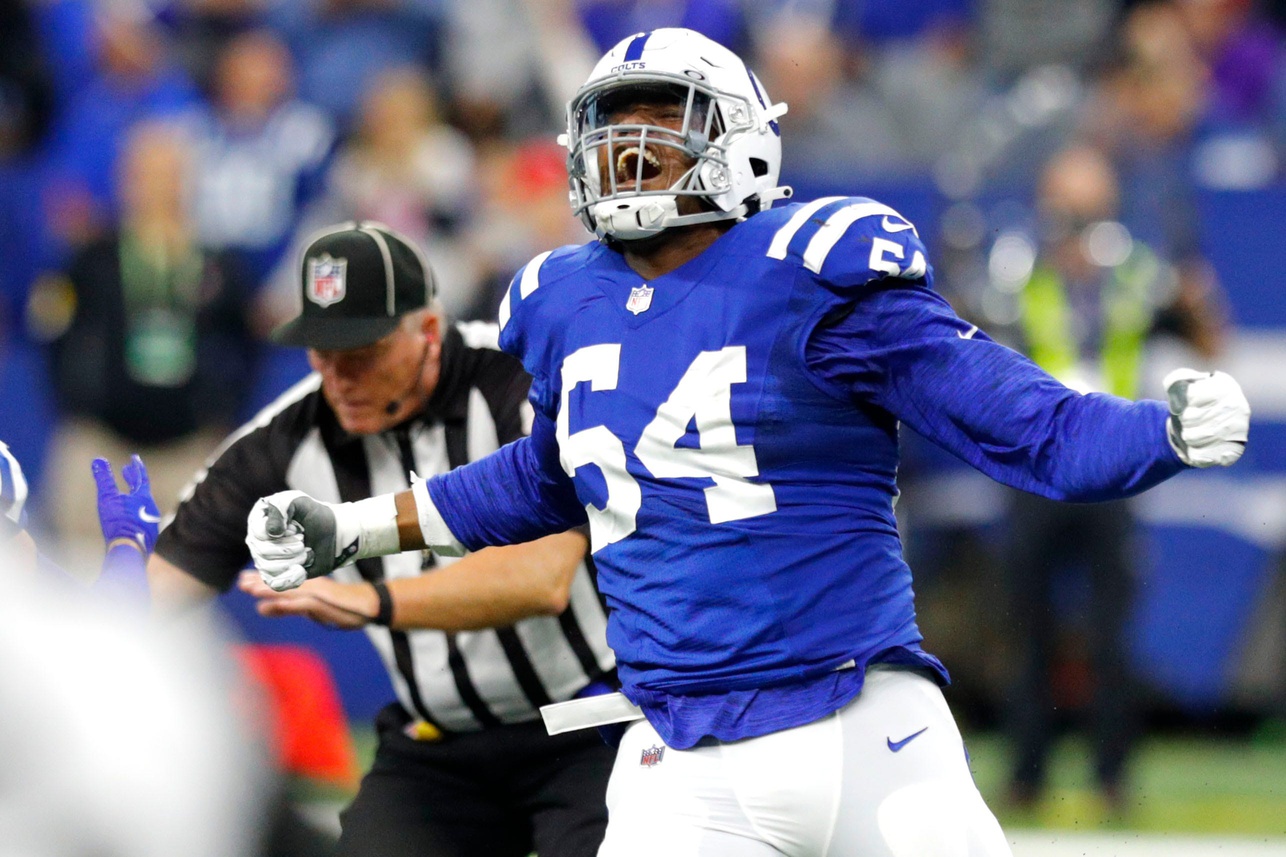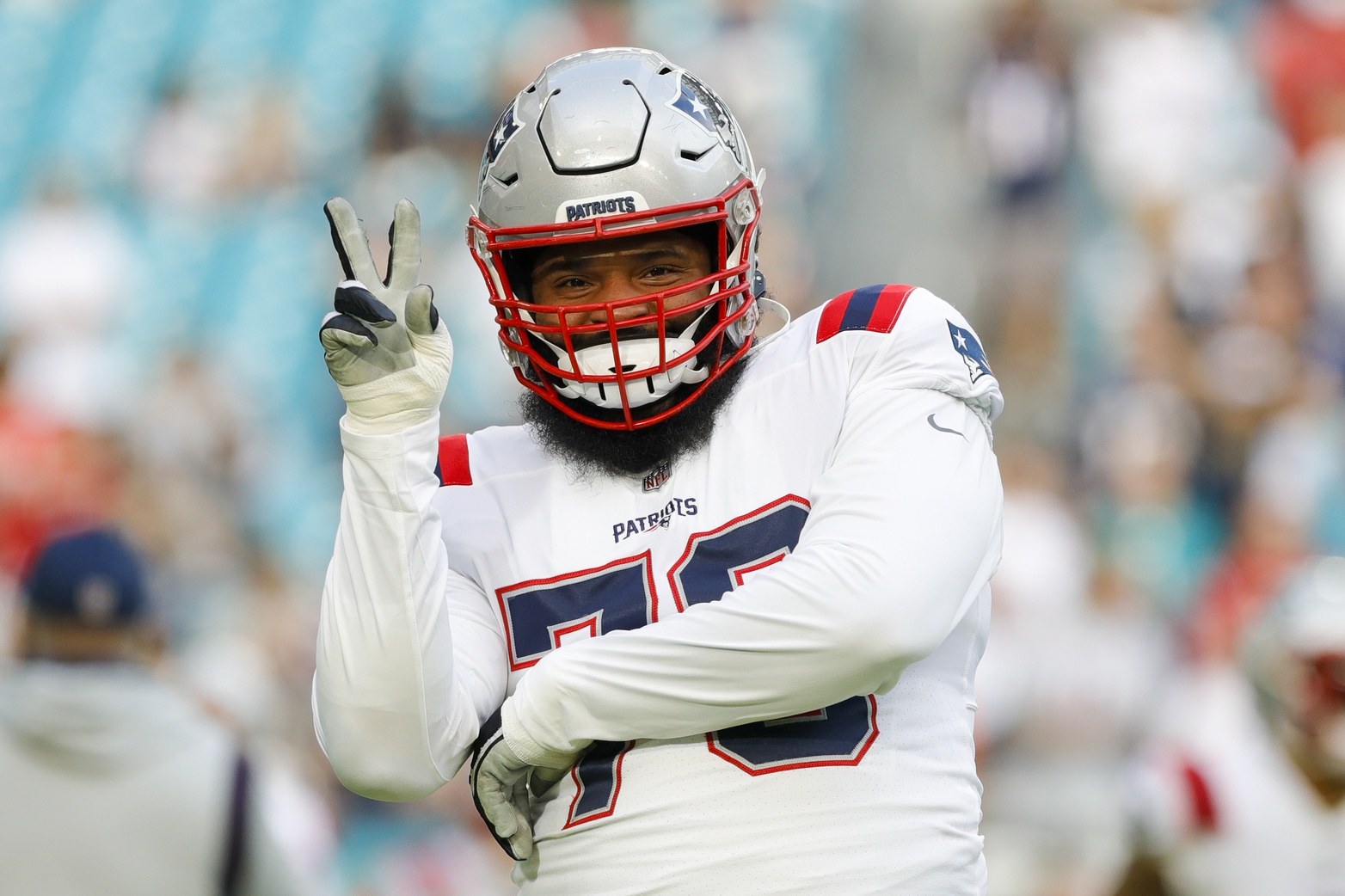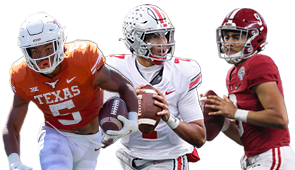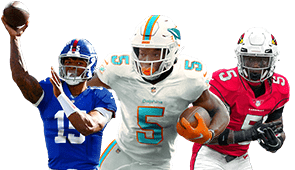As camps hit their midway point and preseason football gets underway, the state of running back rooms across the NFC East remains up in the air. Each team has a ‘bell cow’ back that has become household tongue, but a slew of depth ball-carriers have more than made their case to earn extra touches this fall.
Let’s take a trip around the NFC East and focus on a few names who will prove to be much more than rotational pieces.
Philadelphia Eagles
“When will Miles Sanders break out?” It’s a question asked by Eagles faithful each and every fall, yet three seasons have passed and the former Penn State standout hasn’t provided an answer. Although 2,459 yards in a trio of campaigns is nothing to raise pitchforks about, the talent behind him deserves more run if he’s unable to stay healthy and/or produce when his number is called.
The improvement of Kenneth Gainwell and presence of veteran Boston Scott has introduced a three-headed attack for Nick Sirianni to deploy in 2022. Sanders has failed to appear in more than 12 games in back-to-back seasons, and with expectations in abundance this fall for a high-flying Eagles roster, the leash on Sanders should be shorter with talent sitting in the wings.
Gainwell—another athlete out of the skill player pipeline that is Memphis—deserves more run in year two and has received it thus far in camp. A dual threat talent at 5-foot-9, while he fails to open eyes in pads due to his smaller stature, his explosiveness and ability out of the backfield provide a unique dynamic to the Philadelphia offense.
In 16 games during his rookie season, he rushed for 291 yards and five touchdowns, while also hauling in 33 catches for a tick over 250 yards. While scouting a box score would turn you away from anointing him as a featured talent, with increased touches often comes both improved production and a comfortability within an offense only achieved under live fire. He is only in year two, and while Sanders has been granted job security for now, a backfield consisting of an even rotation of high-impact athletes will only make things easier on quarterback Jalen Hurts.
This leads us to Scott, another outlier to the norm due to his lack of vertical prowess at the position. He’s been as consistent as any player the Eagles have deployed over the last handful of seasons. He won’t rush for over 1,000 yards, nor does he present the versatility that Sanders and Gainwell do, but when his number is called, he produces. His touches out of the backfield have decreased since the arrival of Gainwell, but chalk him up for another 80 carries this year as the Eagles look to showcase one of the more well-rounded offenses in football.
Washington Commanders
A constant in the burgundy and gold offense the last two years, Antonio Gibson has been put on the hot seat following the selection of Alabama running back Brian Robinson Jr. One of the most versatile talents in football, with seven fumbles in just 30 games, ball security has threatened Gibson’s future in Washington. Entering year three of the Ron Rivera tenure, his inability to take care of the rock could ultimately limit his large workload. Plus, you don’t draft Robinson Jr. not to use him, right? What makes his projection so muddy is Gibson has found himself occupying Rivera’s doghouse at times when Washington has needed him most.
A big-bodied talent who amassed 1,037 rushing yards last fall, while he’s enjoyed his fair share of success, microscoping Gibson’s skill set as a bonafide top running back is a tough ask—he’s everything that scouts desire in a modern-day ball-carrier, yet he doesn’t do anything outstandingly well. In the scouting world, he fails to possess an ‘elite trait.’ Going from a primary wideout to “Weapon X” to running back during his days at Memphis, Gibson’s primary success out of school came in the passing game, where his role as a ball-carrier played second-fiddle to his presence as a pass-catcher.
At 6-foot-2 and 220 pounds, when you think about today’s most dominant weapons out of the backfield, the smaller frames of Christian McCaffrey, Alvin Kamara, or Austin Ekeler often headline the group. But for Gibson, a more physical athlete with a bigger punch, his frame presents an entirely different beast when attempting to game plan against him for 60 minutes. He can wear you down inside the tackles, run through wimpy tacklers, and when you bring an extra man in the box, he’ll slip out of the backfield and take a screen pass to the house. And while he’s shown each of those abilities at times so far in his career, securing the football within the highest leverage situations of a football game has become a tough task.
Outside of missing kicks, the easiest way to find yourself holding a clipboard at the NFL level is by putting the ball on the ground. It doesn’t matter that defenders continue to evolve their accuracy when it comes to punching the rock out, when it happens routinely in the shadow of your own goal line, or amid a crucial scoring drive, it’s a major cause for concern. No matter how fast you can cut the corner or what you can do with the ball in space, at any level, an inability to secure the football in tight confines often leads to a decrease in snaps, something Gibson experienced far too often in his second season.
His six fumbles in 2021 were the most among any running back in football. Dating back to 2018, among all NFL ball-carriers, Gibson sits among the top 12 in fumbles despite still being in college in 2018 and 2019. What’s even more concerning is that Gibson is the only player to have seven or more fumbles lost in fewer than 30 career games played among active running backs—the names ahead of him in Melvin Gordon, Ezekiel Elliott, Chris Carson, and Dalvin Cook, have each totaled at least 45 career games played, nearly a full season more than Gibson’s output.
This brings me back to Robinson Jr., a stout ball-carrier who will more than challenge Gibson for carries this fall alongside J.D. McKissic. Another name in the Tuscaloosa-to-Washington pipeline, Robinson is much more than a goal-line punch. While many believe he could fill the shoes vacated by Peyton Barber a couple seasons back as a bowling ball in short down and distances, it would be a disservice to the First-Team All-SEC back to limit him to minimal carries as nothing more than a breather for a series or two.
A talent that earned his way up the depth chart for Nick Saban’s Crimson Tide, competition never fails to breed success, and more weapons on offense for a unit in D.C. that has consistently ranked toward the bottom of the league in points per game should be welcomed with open arms. While Robinson fails to match up with Gibson as an athlete in space, he checks a ton of boxes for Rivera’s group and has welcomed a battle for carries as Washington moves towards Week 1.
While it remains to be seen just how much Robinson is used in year one, insurance is needed in the backfield and Gibson will constantly be looking over his shoulder if his fumbling issues remain. With the addition of Robinson—and McKissic spurning the Buffalo Bills to come back to Washington as one of the top change-of-pace talents in football—Rivera has given Gibson a wake-up call.
Dallas Cowboys
Another summer, another year in which expectations have increased for Cowboys running back Tony Pollard. High-priced talent hasn’t been uncommon in Dallas’ illustrious history. In fact, it’s a recurring theme for the Cowboys to rely on those individual talents to win on paper before ever taking the field each fall. They are often labeled as the victors of the NFC East prior to each season to earn views and clicks from media circles, but it’s fair to say questions regarding the roster and specific position groups remain—especially this season.
Running back Ezekiel Elliott has become a household name since his days as an Ohio State Buckeye and with a sizzling combo of power and agility, the 2016 All-Pro didn’t take long to make his name as one of the NFL’s premier backs. He led the league in attempts (322), yards (1,631), and yards per game (108.7) as a 21-year-old rookie. Granted, Elliott was provided the opportunity to run behind one of the league’s top offensive lines, but let’s not sway off track—Elliott was special in 2016. Going into 2022, it’s not that Elliott’s projected mid-level production is a result of no longer possessing the skillset to return to All-Pro form, but rather that the presence of Pollard should in fact diminish his role.
A fourth-year player out of Memphis, Pollard has received little work compared to the load Elliott has been tasked with the last couple of seasons. However, in that small sample size has come the discovery that Dallas has their bellcow of the future, considering Elliott’s downward trend of play.
Often looked upon as a change of pace on third down, Pollard now has the chance to trump Elliott’s production if offered the required workload to showcase his ability both in the run game and as a receiver on passing downs. The 2020 season—whatever way you want to put it—proved to be the tea leaves of Pollard’s potential success with increased touches. Dallas’ most bang-for-your-buck talent within its backfield, Pollard ranked second among 63 qualified ball carriers with an elusiveness rating of 82.2 (Elliott ranked 31st). While his substandard total of 485 yards failed to open any eyes, his innate ability to create from inside the tackles and explode beyond the line could be the key this fall.
If you haven’t been made aware, the NFL runs on a “what have you done for me lately” mantra, highlighting recent production over elongated periods of success. While Elliott surpassed the 1,000-yard rushing plateau in 2021, Pollard’s uptick in work could form a true two-headed backfield for teams to counter. After failing to amass more than 460 yards on the ground in each of his first two seasons, Pollard rushed for 719 yards on a career-high 130 carries (5.5 yards per carry) that also included 39 receptions for 337 yards (8.6 yards per reception) through the air last season.
Following multiple reports of Pollard working with the starting unit in OTAs, the former Memphis standout has been seen taking increased snaps at receiver during spring workouts. Appearing on just 18% of Dallas’ offensive snaps in 2019, Pollard’s total rose to roughly 32% in 2020 and 35% in 2021, which makes it difficult to classify him as just a gimmick third-down back. Additionally, with Amari Cooper (Cleveland Browns) and Cedrick Wilson Jr. (Miami Dolphins) gone, offensive coordinator Kellen Moore should do everything in his power to allot a significant amount of snaps in whatever way possible to one of the most misused weapons in football.
While money talks in the NFL, so does production. Pollard should receive every chance possible to truly blossom this fall.
New York Giants
The boo birds are expected to serenade the Giants often this year, and the former No. 2 overall pick Saquon Barkley will be playing for his job moving forward.
One of the more dynamic talents to enter the league in some time, Barkley has failed to recapture the success he enjoyed in his rookie season. Eclipsing the 1,300-yard mark on the ground quickly opened the eyes of the NFL, but he’s been a shell of himself since. However, training camp has reportedly treated him extremely well, and with a long list of reinforcements made along the front five—highlighted by Evan Neal—Barkley’s success in year five could be a direct correlation to the fresh influx of bodies in the trenches. If he at any point begins to lose carries to Matt Breida or Gary Brightwell, it could get really bad, really quickly for New York.
Related Articles
NFL
Dayo Odeyingbo Looks Healthy, Ready To Wreak Havoc For Colts
- Aug 22, 2022
NFL
3 Teams That Should Trade For Isaiah Wynn
- Aug 22, 2022
Written By

































